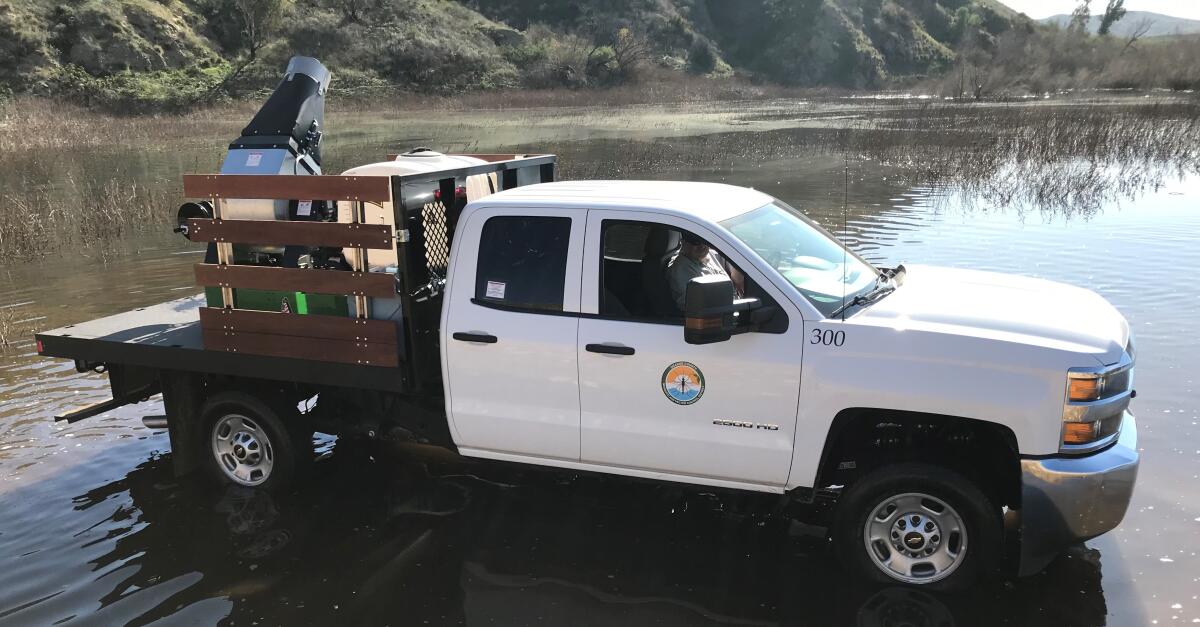Crews get ahead of rains-fueled boom of mosquito larvae at coastal Orange County wetlands

- Share via
Officials keeping tabs on mosquitoes in Orange County saw a boom in their larval population at local wetlands after an especially rainy winter in Southern California, prompting them to cull the potential disease vectors earlier this month, before summer arrives.
A wealth of still-water breeding grounds for the buzzing pests were left by a parade of storms that passed over the region, as well as a king tide that allowed surf to rise over 12 feet along Orange County’s coast, Orange County Mosquito and Vector Control District spokeswoman Heather Hyland said. If left unchecked, that could mean more bites and bumps for people or, worse, the transmission of insect-borne diseases.
To mitigate those possibilities, crews have been sent into the field to reduce mosquito populations. They were dispatched to Fairview Park in Costa Mesa on Monday as well as Banning Ranch in Newport Beach and the Harriett Wieder Regional Park at the Bolsa Chica Conservancy in Huntington Beach on Thursday.
“We’re having high larval counts, and when we see that we want to get ahead of that,” Hyland said. “Because remember that the mosquito life cycle is very fast. They can go from egg to adult within five to seven days. And it’s a lot easier to control larvae than flying adults.”
Workers sprayed a diluted solution of Vectobac onto bodies of water where the pests could be seen moving around near the surface. It contains naturally occurring bacteria that only affects mosquito larvae.
“We put a little bit of that product in a huge vat of water, so it’s not a lot,” Hyland said. “We just spray that out of the truck and it lands in the marshes and wetlands. And it doesn’t affect any other wild lifeforms except a larval form, which would be the mosquitoes.”
The technique is effective against species that breed in wetlands like the common house mosquito, culex pipiens. That variety happens to be the one most commonly associated with the spread of West Nile virus, Hyland said. She added the disease has not yet been detected in Orange County this year.
But spraying down marshes doesn’t work as well against species that like to lay larvae in smaller pools of standing water like aedes aegypti, more commonly known as the “ankle biter” mosquito. Those are an invasive species from Asia that quickly became an issue in Southern California around 2015, Hyland said.
Ankle biters prefer to feed on humans, bite during the day and carry diseases like the Zika virus or cause dengue and yellow fevers. They are black with white stripes and spawn in small ponds, pools and tree holes or uncovered containers that have collected water.
Efforts by residents to clear out potential habitats for them can go a long way in keeping their numbers down, Hyland said. People who feel like they are getting bitten more often can reach out to vector control officials to report any possible infestations.
All the latest on Orange County from Orange County.
Get our free TimesOC newsletter.
You may occasionally receive promotional content from the Daily Pilot.




